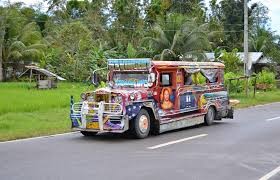The Philippines’ Jeepney Modernization Program has brought forth redesigns of the iconic “King of the Road” transport vehicle – and the public should be aware of reviews from both supporters and critics.
The Department of Transportation (DOTr) is scheduled to launch 200,000 new PUVs over the next three years, and the design direction could make or break the Philippine icon’s image.
An exhibit held in the last quarter of 2017 gave the public and the transport industry a very first glimpse of how the modern Jeepneys will look like in the future.
The PhilApex 2017 showcased prototypes of the modern PUV brought together by transport industry companies of the Automotive Body Makers Association of the Philippines (ABMAP), the Truck Manufacturers Association (TMA), the Philippine Parts Maker Association (PPMA) in cooperation with Department of Trade and Industry.
According to the ABMAP release sent to GoodNewsPilipinas, the response was positive. Both operators and drivers viewed and kicked the tires of the new breed of Jeepney prototypes made by local body builders using mainstream platforms such as Isuzu, Hino, Fuso, Tata, Hyundai, Foton and Jinbei.
ABMAP admits that many traditionalists still criticize them, arguing that there is a need to preserve the old iconic look of the Jeepney which has a long hood in front, low ceiling, small side doors in front and rear opening for ingress and egress.

SARAO JEEPNEYS AND PUVs
History will tell us that the Jeepney evolved from the auto calesas of the post war era when military Jeeps used by American GIs during World War 2 were repurposed to become people carriers.
The rear body was lengthened, side facing rear bench seats were installed and the opening was provided at the rear for easy access. The design was dictated mainly by whatever platform was available at that time. And at that time, it was the American Willys MB Jeep.
The ABMAP release provides a national view of the evolution of the jeepney.
In Luzon, it later evolved with its body becoming even longer but now using available imported surplus Japanese engines from Isuzu, Toyota or Mitsubishi. The design many people associate as the quintessential Jeepney is the Sarao-type Jeepney which has a long hood in front, a sunvisor, rounded roof which extends beyond the body at thesides and egg-shaped rear fender flares. The sides are open thus roll-down rain curtains are provided in case it rains.
But if you go to other areas in the country outside of Luzon, the design has evolved even further. And as always, it was dictated by whatever platform was available. And in this case, it is the imported, second hand light trucks that are used. In Iloilo, jeepneys have a streamlined Honda Civic or Toyota Corolla face in front of an extended rear passenger area. In Bacolod, they sport an AUV front while in Bohol and Davao, it is entirely different as well.

The modern PUV difference lies in the design and performance standards set by the Bureau of Philippine Standards:
- it has side doors instead of rear doors
- no hood
- a higher ceiling height that allows for standing passengers
- Emergency exits are mandated and some units will even have provisions for PWD passengers
- It has also been designed to be airconditioned
- The modern PUV even has a brand new Euro 4 compliant diesel engine
- brand new parts and components from bumper to bumper
- an automated fare collection system
The platform to be used will be the chassis cabs or chassis cowls of existing light trucks available locally. Thus, most prototypes will not have the hood anymore because most platforms nowadays use the cab over design which puts the engine under the seat of the driver. It therefore puts more length in the rear area to accommodate more passengers.
The redesign translates into more passengers, more revenues says ABMAP. All the features of the new design are in consideration of the environment and of the safety and convenience of the riding public.
The ABMAP, TMA and PPMA issued a request for the public “to have an open mind and a fresh perspective to usher in the new age jeepneys which will be safer, more efficient, convenient, economical to operate and environment friendly.”













